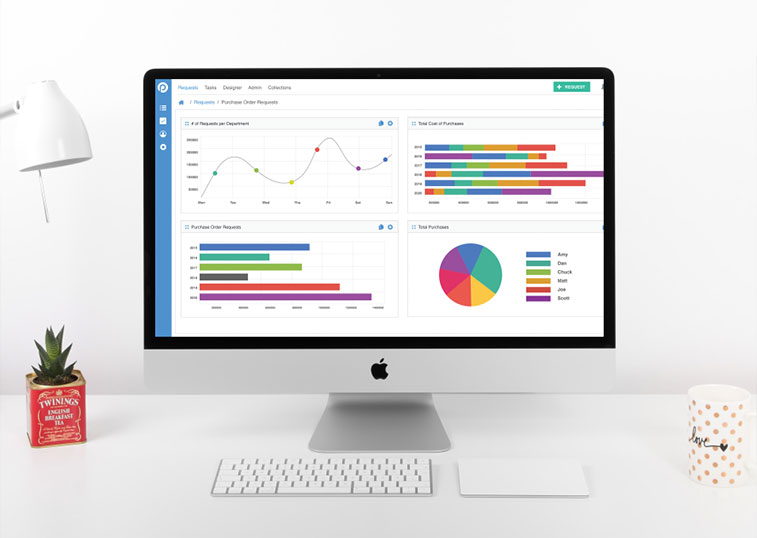The current higher education landscape was facing multifaceted disruption due to a new digital student body. Then COVID-19 happened, making this transition even faster. These new students are expecting a more personalized and intuitive smart campus experience, just like they find on the web. Now more then ever.
Students aren’t just students, they are consumers. You read that right. Yes, students are consumers that have a choice and are empowered by their choices. Thanks to the internet and social media, the many choices of today’s students are based on purpose, experience, and value. Universities across the nation are feeling the hit too, in 2018 only 38% of colleges met enrollment goals.

With the growing concern about meeting enrollment goals, universities need to reshape how they move forward. They need to adopt technologies other industries have long grown accustomed to.
“Smart” innovations used in banking, smart retail, digital workplaces, and even smart venues like stadiums could be expanded to higher education. Even college IT leaders see the benefits, in a study by the Center for Digital Education and CenturyLink, 50 percent of higher education officials agreed smart campus technology could cut costs, and 43 percent said it could help to boost student retention.
Higher education campuses are the heart of the nation’s research, movements, and advancements. For that reason, turning your university into a smart campus can only improve the experience of students, faculty, and staff.
What is a smart campus?
A smart campus uses networked technologies to facilitate communication, enhance security, use resources more efficiently, and of course, save money. Simply put, a smart campus will improve the experience, efficiency, and education.
A smart campus will allow an institution to connect systems such as lighting and door locks, and to create a seamless and interconnected experience for students, faculty, and staff. By using data and analytics, smart campuses can optimize the following:
- Resource utilization: by using networked smart lighting to reduce use and conserve energy, a campus can save on resources.
- Student experiences: by using smart devices, a campus can easily provide wayfinding to new students and visitors on campus. They could also improve the quality of life by fostering a healthier lifestyle with wearables. Not to mention the mass amounts of data that can be taken from employing wifi, hotspots, and voice-enabled devices to streamline the student journey.
- Facilities management: by using Wi-Fi access points and analyzing when students, faculty, and staff come to a certain area and leave a certain area, universities can automate temperature control and other settings in facilities by utilizing machine learning
- Travel patterns: by monitoring travel patterns, a campus can design transit systems with optimized routes and increase services during peak hours. For example, Arizona State University created a color-coded system that can be accessed via their app. It tells students and visitors what parking is available.
- Transportation schedules: a university can easily ease the burden of finding parking with new campus tech. By using cameras, sensors, and Wi-Fi, students can find parking without constantly circling the campus to find one.
Common Smart Campus Examples
- Smart sensors for operational efficiency. Like nest thermostats, sensors can save thousands when implemented in universities, automating everything from dorm water usage to concession stands in the cafeteria.
- Campus wireless and connectivity
- Hybrid Learning spaces
- Autonomous vehicle ranges (currently experimental)
- Administrative process automation
Dig deeper: 8 Smart Campus Technology Examples Currently Used By Universities
How do I make my university a smart campus?
A smart campus doesn’t just happen overnight. Colleges should define a common understanding and vision to leverage smart technology on campuses. You have to think about your university on a holistic level before designing a plan to build a smart campus at your school.
IT must examine their current networking infrastructure to see if it is in your campuses’ capacity to handle a vast range of connected devices. According to Deloitte, the vision of a smart campus relies on a diverse stack of technology capabilities that should have the following layers: presentation/channels, analytics and automation, data platform, integration, enterprise applications, infrastructure, security and risk.
With the technology architecture in place, universities should focus on key principles that foster interconnectivity at a consumer-grade level:
Intuitive: today’s students are digital natives that are used to intuitive platforms and gadgets. These students want to interact with a system that is intuitive and simple to use. By utilizing buyer personas and user journeys, a smart campus can make interaction effortless.
Persona-centric: video, voice, gesture, touch. All these interactions should be design thinking and persona-centric. For example, professors can use voice technology to enhance their lectures. Or send reminders to students as seen in the video below:
Flexible: technology is constantly changing and evolving because of that campuses need a technology stack that doesn’t lock them down. A campus should look to a domain-driven design architecture based on microservices. This architecture approach allows for flexibility that enables a smart campus to evolve over time.
Scalable: traditionally, campuses are local in their reach and scale. Not with a tech enabled campus. A smart campus should allow for global scalability that leverages digital tools and technologies to provide data-driven experiences.
Conclusion
If universities expect to remain competitive, they must adopt smart campus technologies. The design of your smart campus is paramount to the success of the implementation. Take your time, plan, and get in campus-wide buy-ins in order to turn your university into a smart campus, the right way.
Download our whitepaper to expand your knowledge of automation in higher education and the smart campus, and insight into the value proposition of intelligent business process management (iBPMS) software.




